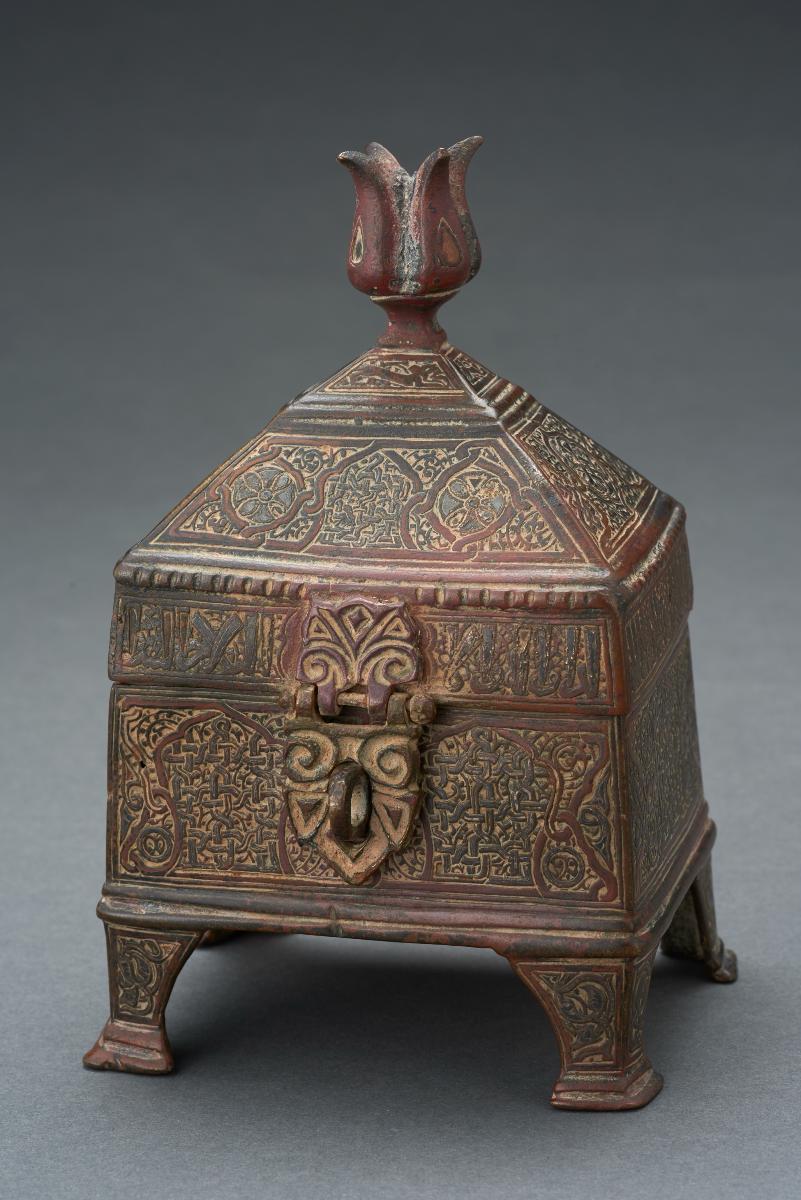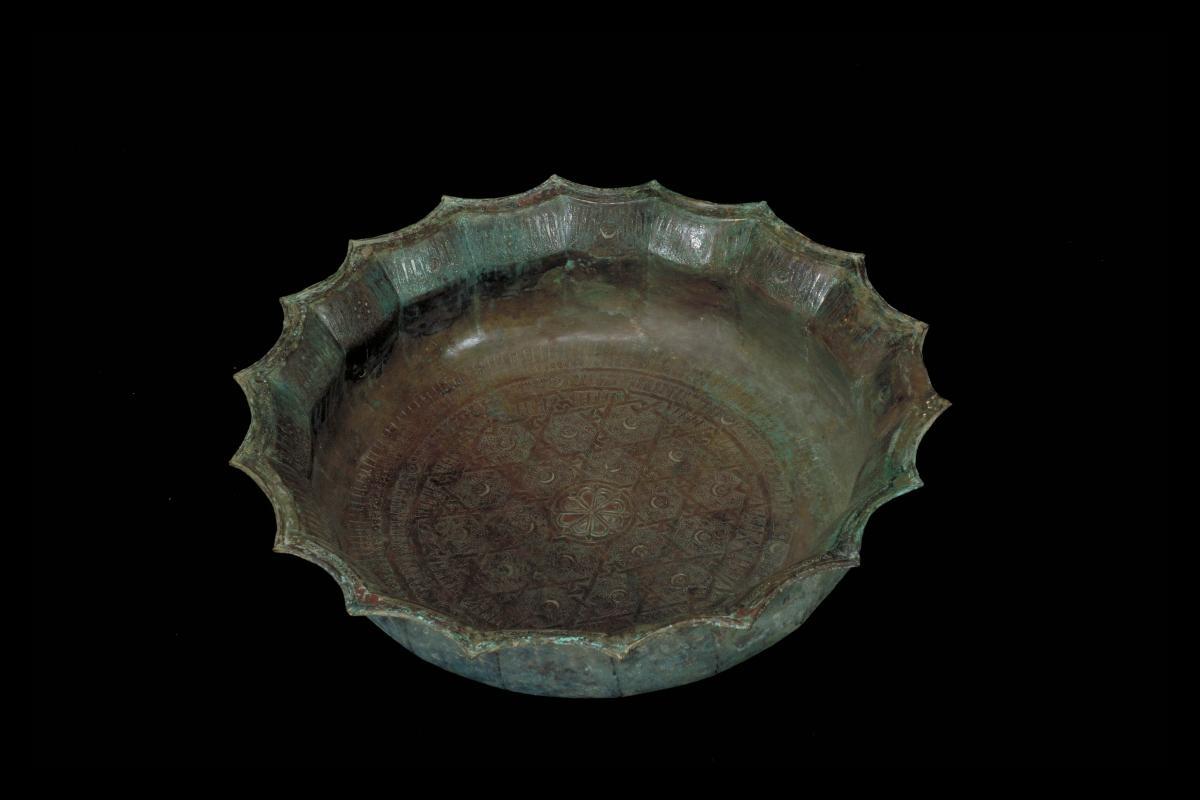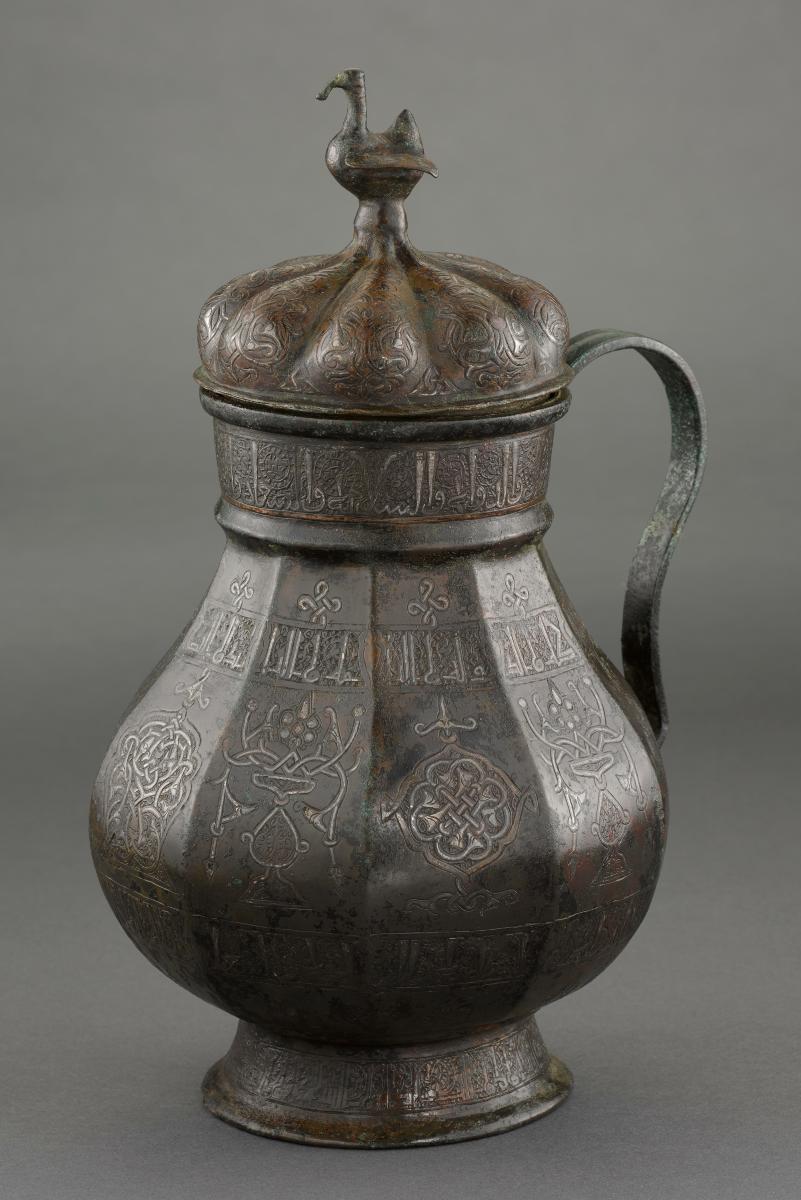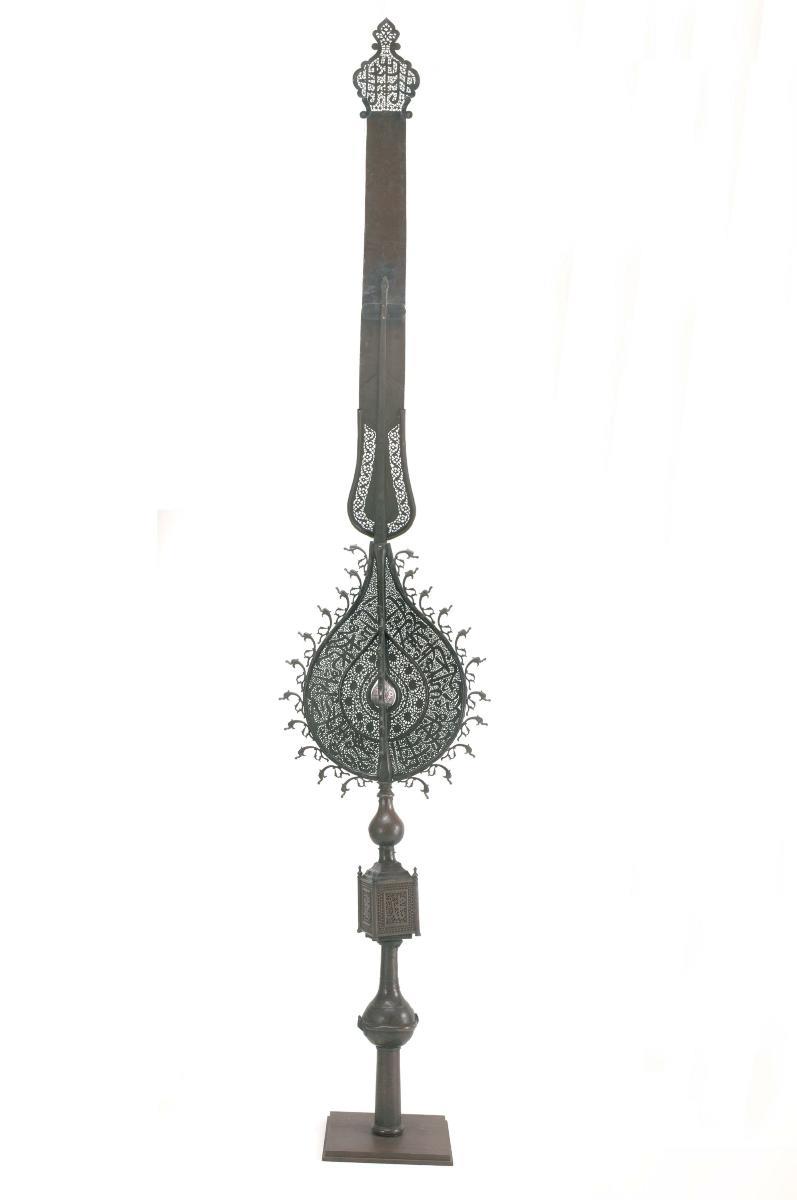The early medieval period (ca.11th to 14th centuries) was an important era when the Islamic arts in all media flourished. One of the more significant developments was the advancement in metal inlay techniques, resulting in finer, more intricate and elaborate polychrome ornamentation and decoration. This, in turn, transformed previously plain metalware into luxury items and works of art. This casket is a superior example from the region of Khorasan located in northeast Persia. With a slightly tapering rectangular body, its pyramidal cover is topped by a pronounced tulip-shaped knop. A band of benedictory phrases in the naskh script adorns the top edge of the box, while scrolling arabesques and tendrils fill the main ground of the body. The side panels feature four roundels per grid, which shows a bird in different poses. Human figures are depicted in the reverse panel.















